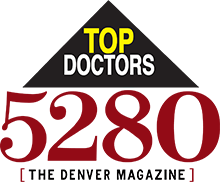
Impact of Aging on Healing
Spending any appreciable amount of time in the world should be sufficient proof that time produces profound changes in our bodies. While these changes may be most apparent in infancy and childhood, there are critical modifications to many aspects of our physiology throughout our lifetimes.
Among the most important is how our bodies can repair damage. It is quite apparent to most adults that the speed and efficacy of wound healing declines after childhood. This is closely related to our development. By our early twenties, most of us have fully completed most of our developmental processes. After this, we slowly begin to decline.
How Our Bodies Change in Our 20s
You have probably noticed a myriad of changes in your body when you are out of your teen years. You stop growing vertically, puberty should have ended, and your skin has probably cleared up. Among the more unnoticeable changes is loss of “baby fat” which can make your face look thinner and nails that grow more slowly and are more brittle.
One major change that occurs in young adulthood is a slowing of your metabolism. Although some of this is related to lifestyle changes like devoting more time at work, other factors include diminishing muscle mass and less efficient cellular processes.
Research shows that one of the most energy intensive components of your cells is the mitochondria. Older people tend to have fewer of these organelles and those that remain are less efficient at converting oxygen into energy-rich materials.
Another key calorie-burning cellular mechanism found in our cells is the sodium-potassium pumps. Studies reveal that these pumps were 18 percent slower in older people which means that they burn 101 fewer calories a day.
You can minimize alterations to your metabolism, but it takes effort and discipline. Because the greatest factor in a slowing metabolism is loss of muscle and activity, if you engage in muscle-building exercise on a regular basis, you can counteract this slowdown. Loss of sleep can fatigue your body and slow your metabolism, so you should make it a point to get a good night’s rest every night.
Why Wound Healing Is Less Efficient
You have, no doubt, noticed that cuts and scrapes take longer to heal as you get older, and they may not heal as completely as they once did. There are many factors that may influence this loss of healing efficiency, including
- Sedentary lifestyle—a lack of activity can slow many metabolic processes including healing. Furthermore, obesity is a common result of inactivity and can impede healing by putting physical pressure on open wounds. Fat cells are also less efficient in terms of blood flow and oxygenation.
- Malnutrition—if you are not consuming nutritious foods that include vitamins, protein, and minerals necessary for healing, then you may experience more discomfort due to slowed or imperfect healing. Protein, which provides the amino acid building blocks, and carbohydrates, which power the healing process, are especially important.
- Smoking—in addition to the many toxic effects that smoking has on the body is its ability to slow down healing by reducing oxygen flow. Not only does the smoke clog up and damage lung tissue, but the nicotine also constricts blood vessels which inhibits the transport of oxygen and nutrients to damaged tissue.
- High blood pressure—another common health condition among older adults is high blood pressure which also impedes blood flow to healing tissue. This diminished blood flow curtails healing by limiting delivery of oxygen and critical nutrients.
- Poor health—in general, if you are in overall poor health, then your rate of healing will slow. It should be obvious that if there are more systemic issues that your body must address, then it will be unable to devote abundant resources to healing.
- Infection—if you are ill or your wound is contaminated with dirt or bacteria, then your body will heal more slowly as it tries to tackle both problems simultaneously. Although all phases of healing may be slowed, it may be most apparent during the initial inflammatory phase in which antibodies and white blood cells—key components of the immune system that fight off Infection—are in short supply.
- Multiple trauma—if you are suffering multiple traumatic injuries or a succession of them, then your immune system may simply be overburdened.
- Local factors—if your wound is in a problematic area, then there may local issues that limit healing. For example, if your skin is dry, then you may be at risk for skin lesions or thickening which can impair wound healing. Conversely, wet skin may foster infections that can also slow healing.
- Medications—some drugs can interfere with the healing process. One common example is non-steroidal anti-inflammatory drugs like Advil can inhibit the immune response which is critical for healing.
- Stress—your emotional state can play a key role in healing speed. Studies show that people who are under significant stress do have diminished healing rates.
How to Speed Up Healing
If you have difficulty recovering from injuries, then there are steps you can take to accelerate the healing process.
- Stay hydrated—drinking plenty of fluids while you are recovering is essential. Not only is water necessary for the tissue rebuilding process, but it also promotes optimal blood flow to injured areas.
- Get plenty of sleep—during sleep, your body allocates more resources to healing damaged tissue, so make sleeping a priority. Conversely, a lack of sleep can fatigue you at the cellular level and slow the recovery process.
- Avoid stress—it may be difficult but do your best to avoid undue stress. If you have the time and inclination, you may want to try mind-body techniques like mindfulness or yoga to help you reduce stress.
- Practice good hygiene—you want to keep your wound clean, so avoid undue exposure to contaminants. If you have a dressing, be sure to change it regularly.
- Listen to your doctor—the best thing you can do is listen to your doctor and follow their instructions.
Article written by: Dr. Robert Moghim – CEO/Founder Colorado Pain Care
M.D. Disclaimer: The views expressed in this article are the personal views of Robert Moghim, M.D. and do not necessarily represent and are not intended to represent the views of the company or its employees. The information contained in this article does not constitute medical advice, nor does reading or accessing this information create a patient-provider relationship. Comments that you post will be shared with all visitors to this page. The comment feature is not governed by HIPAA, and you should not post any of your private health information.



